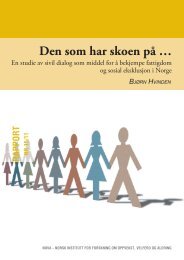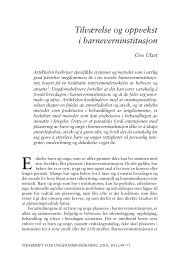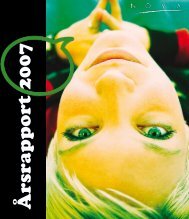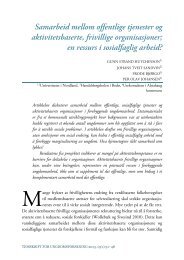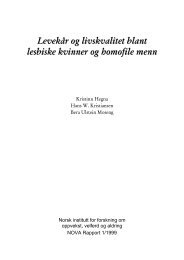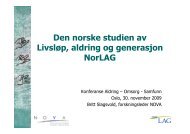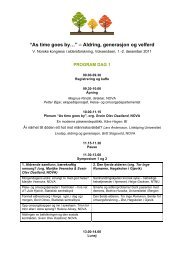Parents' socioeconomic status and children's academic ... - Nova
Parents' socioeconomic status and children's academic ... - Nova
Parents' socioeconomic status and children's academic ... - Nova
Create successful ePaper yourself
Turn your PDF publications into a flip-book with our unique Google optimized e-Paper software.
1 Introduction<br />
In Norwegian schools, pupils’ educational attainments are measured by<br />
grades from the 8 th year onwards. The grades are affected by learning capabilities<br />
<strong>and</strong> the effort put into schoolwork. School results are not r<strong>and</strong>omly<br />
distributed across groups. In this Working Paper, we explore how school<br />
grades differ between different groups. The main data employed are a sample<br />
drawn from a population of children in families who in 2000 had incomes<br />
below 60 per cent of the median income. Hence, the paper is about variation<br />
in school grades among children from families who 5-6 years prior to the<br />
survey had quite low family incomes. Our interest in the correlation patterns<br />
of school grades within a group that has experienced (<strong>and</strong> may still be<br />
experiencing) poverty is threefold. First, school grades in the final years of<br />
compulsory schooling affect future opportunities in the education system<br />
<strong>and</strong> the labour market. Second, grades can be understood as an indicator of<br />
well-being, <strong>and</strong> third, they can in turn affect the well-being of schoolchildren.<br />
This paper is a part of the project ‘Children’s level of living – the<br />
impact of family incomes’ (Barns levekår – betydningen av familiens inntekt)’,<br />
conducted by Norwegian Social Research (NOVA) <strong>and</strong> financed by<br />
The Norwegian Women's Public Health Association (Norske Kvinners<br />
Sanitetsforening, NKS). Data for this project were collected from a r<strong>and</strong>om<br />
draw of families with children <strong>and</strong> an income level below a poverty threshold<br />
in the year 2000. A smaller control group of families with children was also<br />
drawn. Personal interviews were conducted with families in 2003 <strong>and</strong> 2006,<br />
<strong>and</strong> children <strong>and</strong> parents were asked to fill in a postal questionnaire 1 (for<br />
more details on the sample, see S<strong>and</strong>bæk <strong>and</strong> Sture 2003; S<strong>and</strong>bæk 2008).<br />
In this paper, we primarily utilize the 2006 data.<br />
Some studies (such as Hansen 2001 b; 2001a; Bakken 2003; Hansen<br />
<strong>and</strong> Mastekaasa 2006; Huang 2007; Bakken 2008) show that social position<br />
1<br />
A third wave takes place in 2009.<br />
– Parents’ <strong>socioeconomic</strong> <strong>status</strong> <strong>and</strong> children’s <strong>academic</strong> performance – 9




